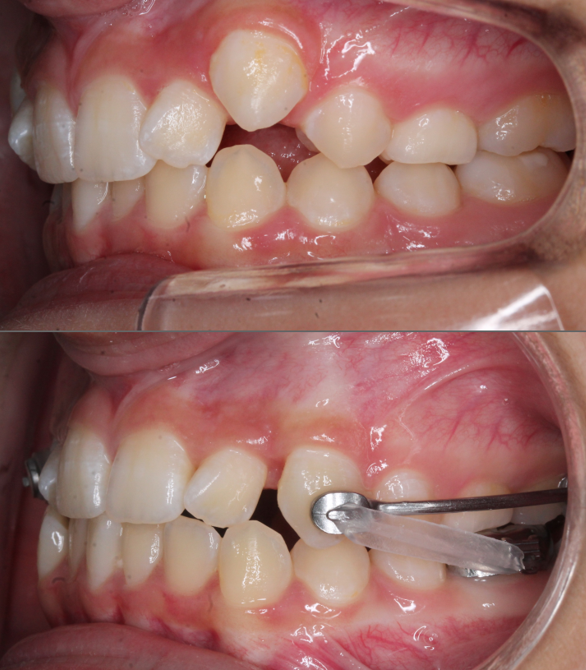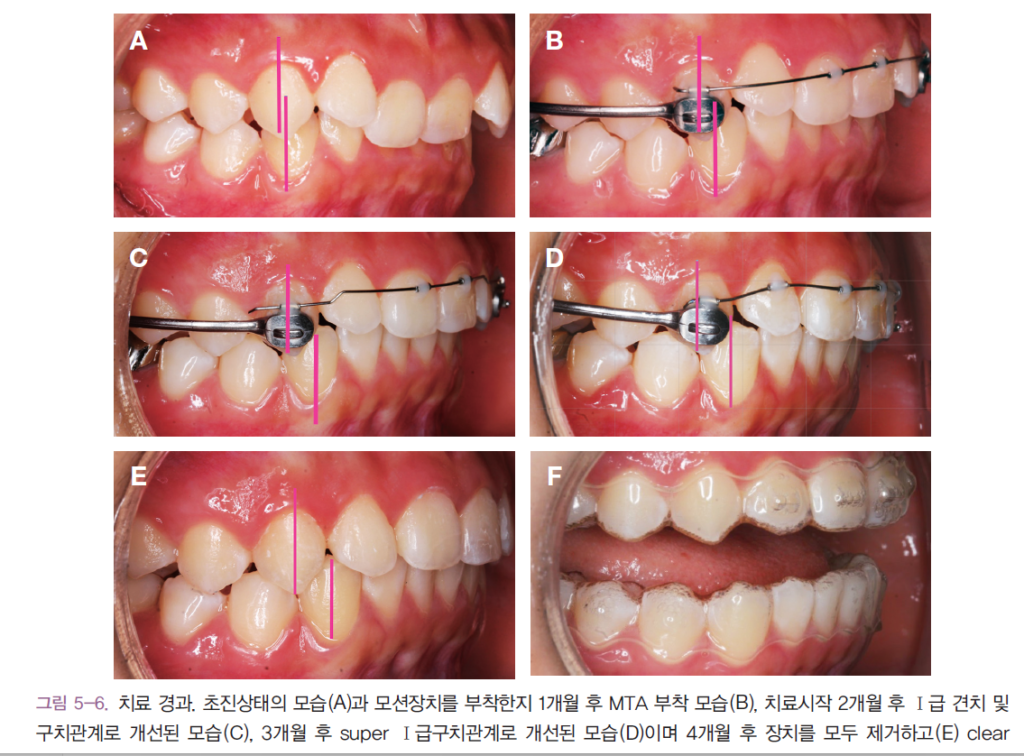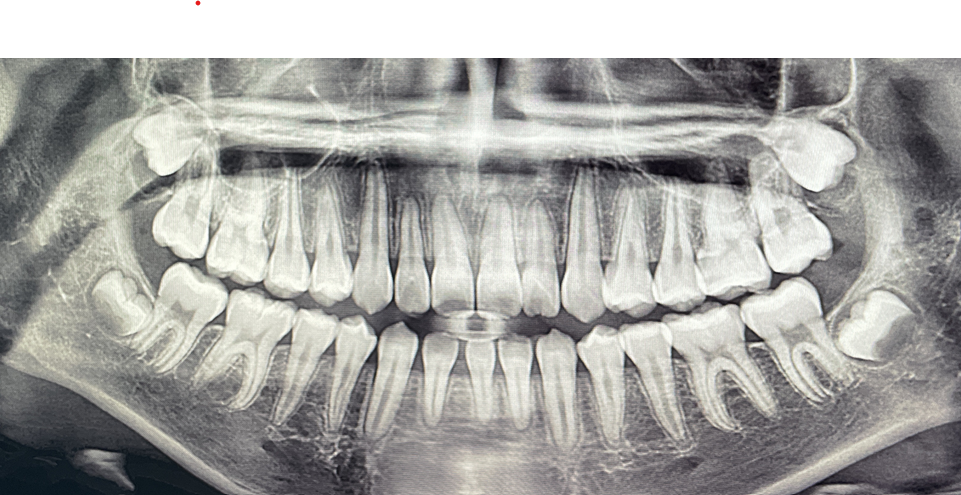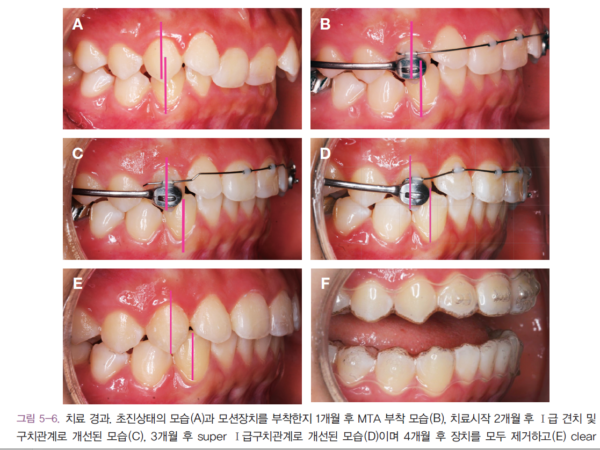A couple of weeks ago, my friend sent me pictures of his patient over the Kakao talk(Korea’s popular messenger app). He asked me if that patient could be treated with a Carriere motion appliance. (distalizer). My friend is an orthodontist.He finished orthodontic residency in the States 4 years ago. He had been consulted me about the treatment plan occasionally.


The patient’s upper lip looks more protruded than it was supposed to be. It can be because of retruded mandible and large overjet due to missing one incisor.
“Can Carriere Motion appliance work for this patient?”
I guessed the patient’s parent wanted to improve upper lip protrusion. Do you thinks this can be corrected with non-extraction treatment using Carriere Motion Class II appliance?
Of course he can. It is his patient and he is licensed to treat your patient as you wish as long as it is not illegal..
But will it work? That is the problem. Please note that the treatment goal was correcting the lip protrusion, not Cl II relationship..
Before deciding which appliance to use, let’s do a treatment plan thoroughly.
Let’s look at the face first. Upper lip is protruded.Chin is retruded.
Now, take a look at the torque of upper central incisors. It is slightly protruded. How about lower incisors? It looks flared in the lateral cephalogram.
If you want to retract upper incisors, you don’t want to flare lower incisors. If lower incisors are flared forward, less room will be available for upper incisors to be retracted. Interestingly, the patient has only three lower incisors. Consequently, in this particular patient, Carriere Motion appliance can be used.
But, can we retract the upper incisors enough with a Carriere motion appliance? The amount of distalization with any appliance is less than when we extract premolars..If the patient’s chief complaint is lip protrusion, extraction of the upper premolar will be a better option. If third molars are extracted, Carriere motion appliance can be an alternative treatment option. Because of 3 lower incisors, virtual tooth set-up is critical in treatment planning this case.
For Asian patients, lip protrusion is quite common. Because of this, Carriere Motion appliance is often not recommended unlike Caucasian patients.
What is Carriere motion appliance?
Carriere Motion 3D Class II appliance or Carriere Distalizer is a fixed Class II corrector. It is bonded on the upper canine and upper 1st molar. In the lower arch, clear retainer or lingual holding arch is placed. Interarch elastic (1/4″ 6oz or 8 oz)is worn between upper canine and lower first molar.

It has been marketed as a Class II corrector that functions to rotate and upright the maxillary first molars while distalizing the posterior segments as a unit.
How does it look like? Pictures below are from the book “Mini-tube appliance” where I wrote two chapters about Carriere Motion appliance and mini-tube appliances.
Class II canine and molar relationship was corrected to super Class I or Class III relationship in 3 months. It looks amazing, isn’t it?
If we look at the canine relationship, it was end-on initially. But the Class II correction was quite fast.
What are indications for Carriere Motion appliance?
Carriere Motion appliance is not indicated for every Cl II malocclusion. When patients have Cl II canine relationship, there are basically 3 ways to correct that when teeth are not extracted.
- Move upper dentition backward. No mesial movement of lower teeth- Headgear or orthodontic mini-screws .
- Move upper dentition backward AND mesial movement of lower teeth- Interarch elastics, Carriere Motion appliance, Sequential distalization technique using elastic (Invisalign), and most Cl II correctors (Forsus, Herbst, CS 2000, etc.)
- No distal movement of upper dentition. Mesialization of lower teeth,
- First scenario would be when maximum anchorage is required in the upper dentition. If upper incisors are protruded or crowing is present in the upper arch
What are advantages of Carriere Motion Class II appliance?
- Fast molar correction (Picture below)
- No fixed appliances are needed during Class II correction.
- Easier to obtain patient’s cooperation
- Easier to place and remove the appliance

Fast tooth movement with Carriere Motion appliance.
Can Carriere Motion appliance fix Class II malocclusion all the time?
The Carriere motion appliance is my favorite appliance to correct Cl II canine or molar relationship. The manufacturer claims that the Carriere Motion appliance can correct Cl II at almost any circumstances. But really? Can full-cusp Cl II can be corrected with Carriere Motion appliance? Or can full-cup Cl II be corrected in some patients and not in other patients?
The answer is NO. It does not work all the time. Many times, you will experience that Cl I relationship cannot be obtained even when the patient is very cooperative and seems to wear rubber bands as instructed.
Especially, full-cusp Cl II relationship may not be corrected to Cl I relationship in many cases.
What are critical factors that dictate the amount of Cl II correction?
Then, how can we tell when full-cusp Cl II can be corrected into Cl I relationship and when it cannot be. This is very important information and you will not find the answer easily in any book or in the internet. From my experience, the most important factor is the availability of the bone behind the upper 2nd molar.
- Available space distal to the 2nd molar
- Patient’s age
- Degree of third molar development
- Patient’s cooperation

Roots of upper left third molar started to develop. Crown tip of the upper left third molar is approaching halfway of the 2nd molar. In this situation, distalization of upper molars is hard to achieve.
Literature about Carriere Motion appliance
- Areepong, Daniel, et al. “The Class II Carriere Motion appliance: A 3D CBCT evaluation of the effects on the dentition.” The Angle Orthodontist 90.4 (2020): 491-499.
- Yin, Kaifeng, et al. “Evaluating the treatment effectiveness and efficiency of Carriere Distalizer: a cephalometric and study model comparison of Class II appliances.” Progress in orthodontics 20 (2019): 1-12.
